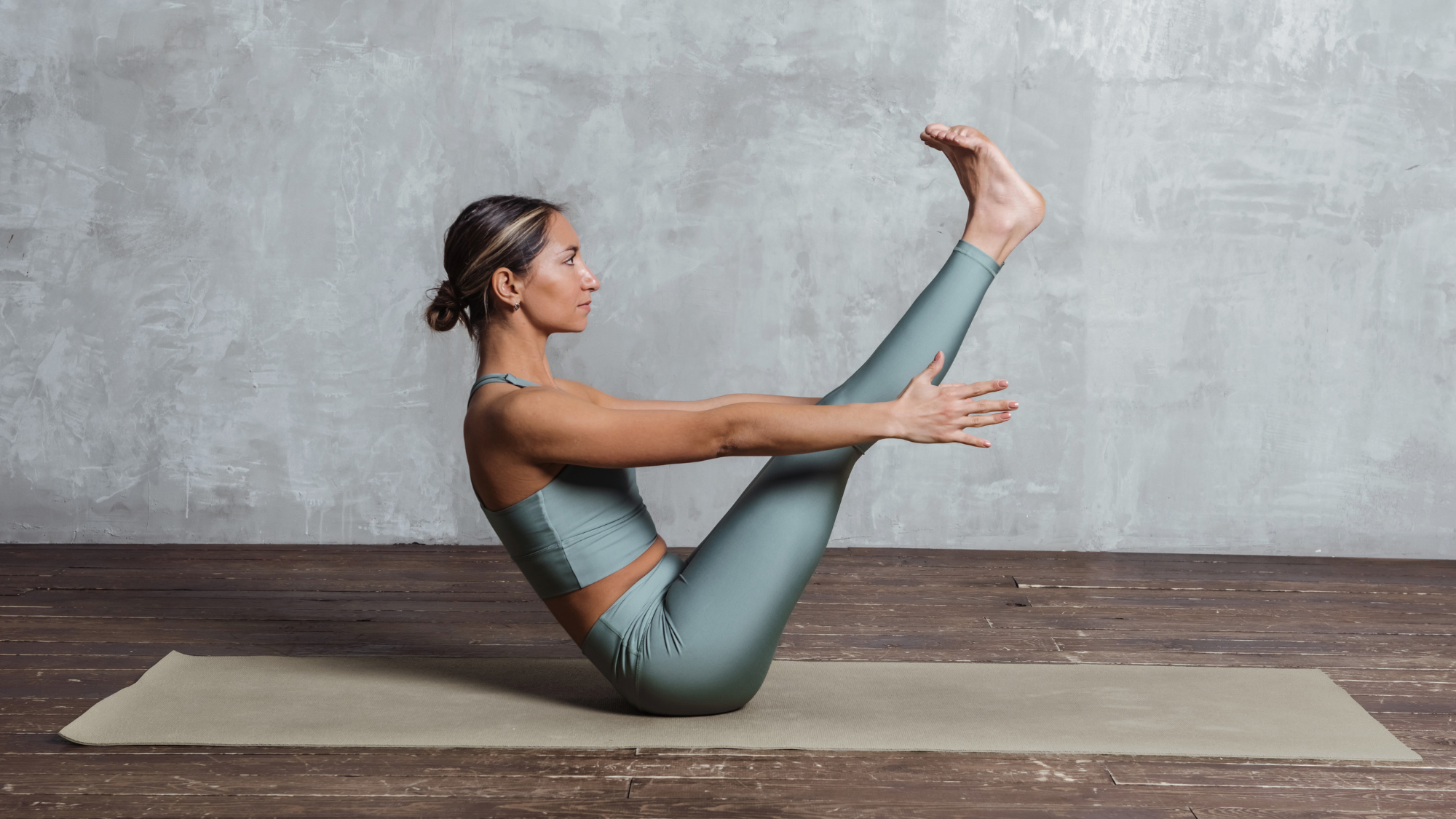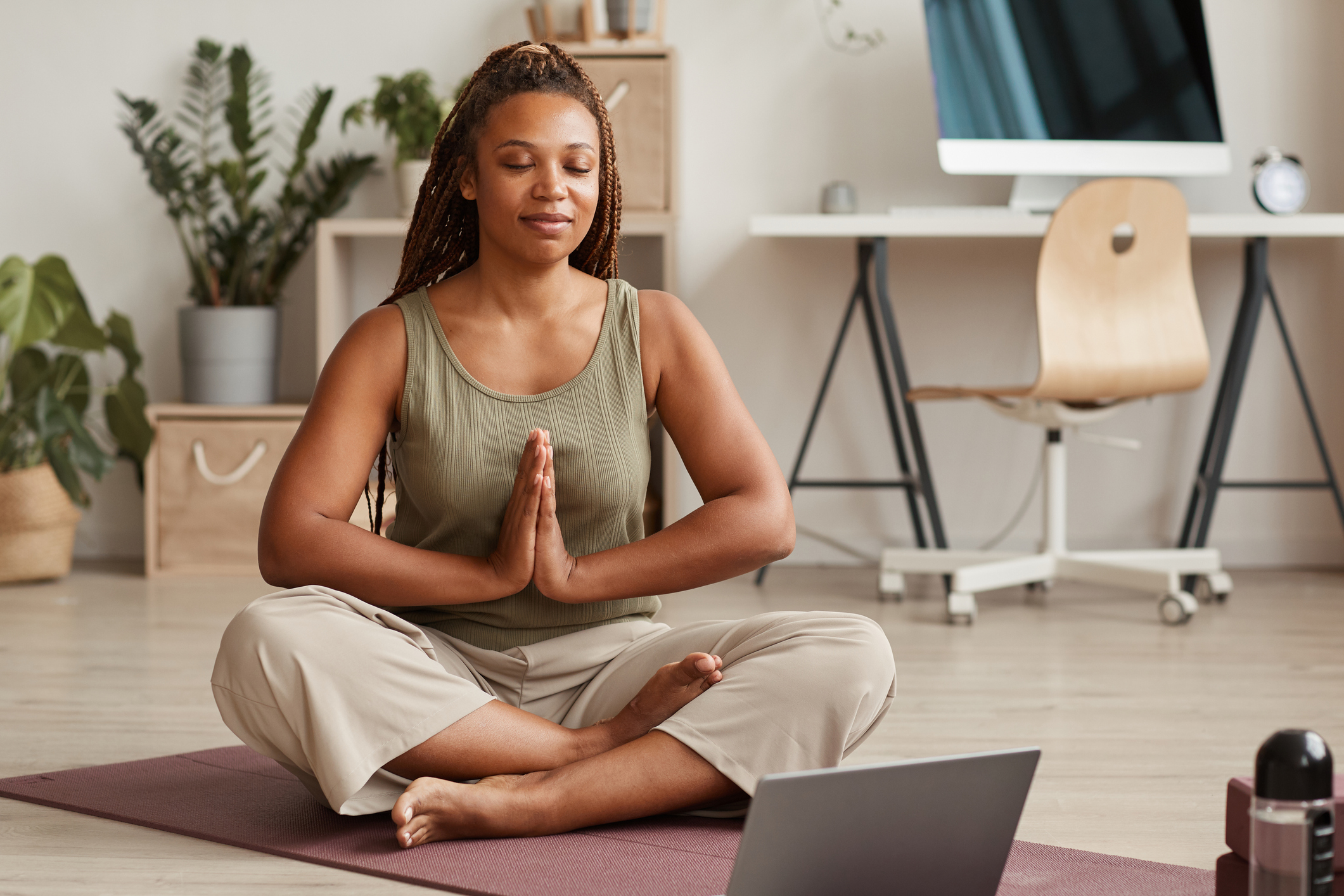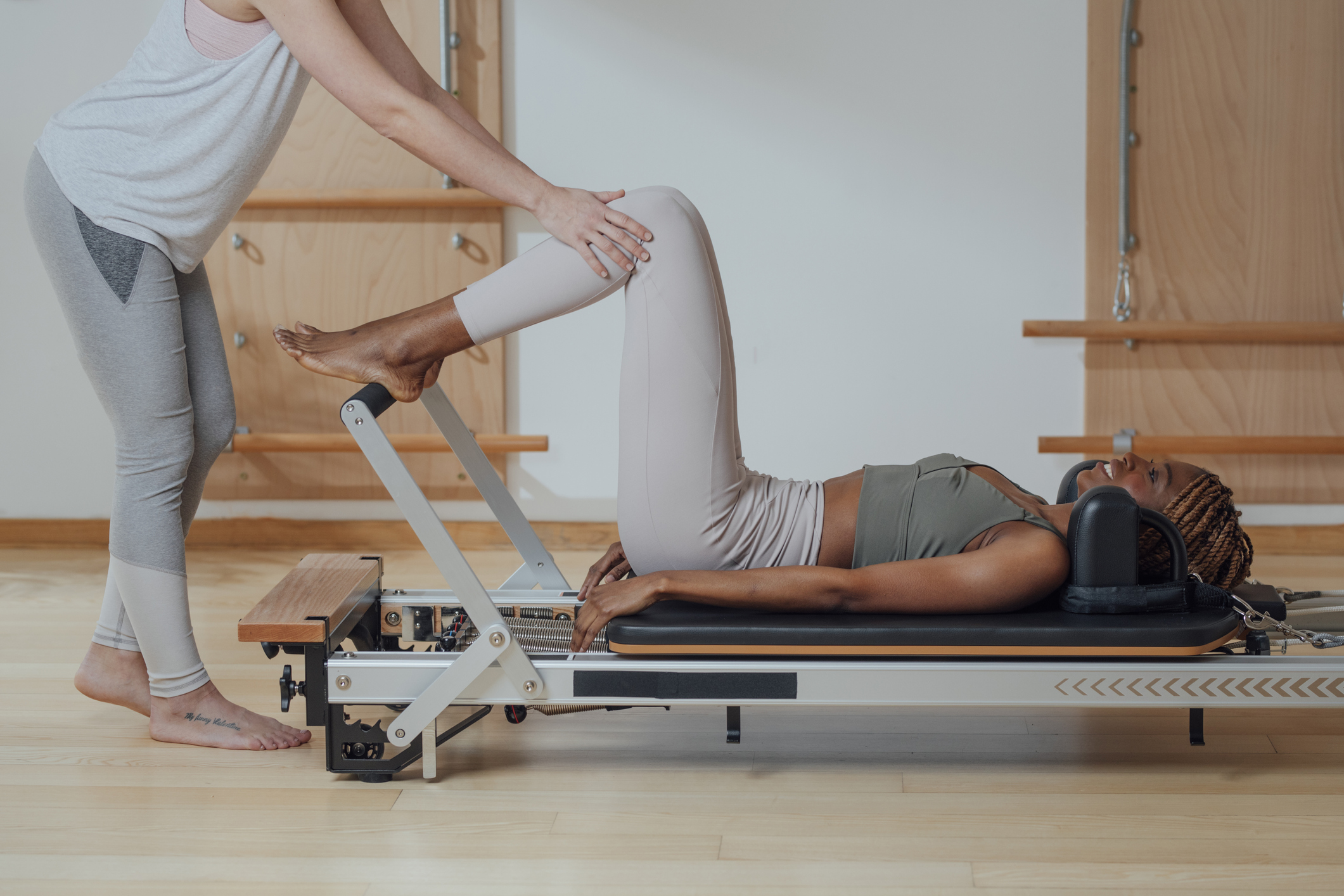
- 1. 10-minute yoga flow with Adriene
- 2. 15-minute yoga flow with Annie Clark
- 3. 20-minute yoga flow with Ally Maz
- 4. 30-minute yoga flow with Sarah Malcolm
- 5. 50-minute yoga flow with Sanchia Legister
- 6. 10-minute Pilates workout with The Pilates Kitchen
- 7. 15-minute Pilates workout with Lottie Murphy
- 8. 30-minute Pilates workout with Move with Nicole
- 9. 45-minute Pilates workout with Move with Katja
- 10. 30 minute Pilates workout with Lottie Murphy
Pilates is all the rage in 2023, but do you know what the difference is between Pilates vs yoga? While you might be clued up on the benefits of pilates and be able to name your favourite Pilates exercises, actually defining the difference between Pilates and yoga is a little more tricky.
There's a lot of cross over between the two lengthening and strengthening workouts. Just like yoga for beginners, pilates for beginners is a good way for fitness newbies to start moving. They also both focus on breath work and flowing between exercises, but there are some key differences between Pilates and yoga.
For instance, while a 2019 study found that Pilates training was superior to yoga for improving functional movement, a British Medical Journal paper reported that those with mental health conditions reported greater reductions in depressive symptoms after practicing yoga. However, to complicate things further, there are many different types of yoga (like yin and ashtanga) and Pilates, including Reformer Pilates.
Here, two experts explain the difference between Pilates vs yoga, plus how to learn the difference between the two once and for all.
Pilates vs yoga: what's the difference?
What is yoga?
First up: A quick overview of the definition of yoga. In short, it's an ancient spiritual practice that aims to connect both body and mind. Not sure what that means? It's a type of workout where you'll typically flow from position to position while focusing on your breath (known in yogi world as pranayama) and mindset.
With roots in Indian culture, it usually involves your instructor guiding you from asana to asana - that's pose to pose. There are loads of different types of yoga, from yin, a more relaxed, stretch-like workout, to bikram, a more advanced workout guaranteed to work your core and glutes. Keen to try for yourself? Head to a yoga class and you can't go far wrong - and don't miss our guide to breathwork training to help you during your flow, too.

What are the benefits of yoga?
According to Louise Hutchings, a qualified yoga professional with over 25 years of experience, yoga has a whole heap of physical and mental benefits.
Celebrity news, beauty, fashion advice, and fascinating features, delivered straight to your inbox!
These include:
- Boosts your energy
- Strengthens your muscles
- Calms the nervous system
- Increases flexibility
- Increases feelings of happiness.
Who should do yoga?
As above, there are many varieties of yoga to choose from, she shares - so make sure you pick the right one for you. "Some are really physical, some include chanting, and others focus more on breathing, meditation, and mindful movement," she shares.
Try this: before you start a yoga class, consider what you want to get out of it (and read our guide to yoga for beginners, if you're a total newbie). "This will depend on your physical health, fitness, and even your personality," she shares. "Don't be afraid to try out different yoga styles and teachers, before committing to a regular class."
Need more guidance? Here, Hutchings breaks down a few types:
- Ashtanga yoga is perfect for those wishing to focus on strength and stamina, as well as flexibility and balance.
- Yin yoga focuses on calming the body and mind, enabling the muscles to release tension. "As such, it's good for beginners who want to get to know the postures slowly," she shares.
- Bikram yoga is the style for you if you love sweating - perfect for athletic types who want to go deep into postures.

Who should avoid yoga?
Good question - because not all workouts are for everyone. "Anyone coming to yoga with spinal injuries, osteoarthritis, osteoporosis, or any other physical challenges should avoid the more dynamic types, including ashtanga and vinyasa," she advises.
Also note: It is very important to discuss any issues with your teacher to see if the class is right for you. "If you decide to take part, never strain. If you have an injury or medical condition, try gentle yoga or therapeutic yoga, which is an excellent way to strengthen, aid flexibility, calm and energise," the yogi recommends.
What is Pilates?
On the other hand, Pilates is a more modern workout technique initially developed as a rehabilitative tool. Joseph Pilates - hence the name - was a German gymnast born in 1883, who dedicated his life to teaching his exercising techniques and repeating the mantra that poor posture goes hand-in-hand with poor health.
Whereas with yoga, there is a big focus on spirituality and connecting both body and mind, Pilates is more about low-impact bodyweight moves that will challenge your abs, core, glutes, and arms. It's a much-loved celebrity workout - fans include the Kardashians - and can be done from the comfort of your own home, minus any equipment.
There are different types - bodyweight Pilates and reformer Pilates, the latter including a reformer Pilates machine.

What are the benefits of Pilates?
According to Lynne Robinson, co-founder of Body Control Pilates, there, again, are loads.
The benefits of Pilates include:
- Improved posture
- More efficient breathing
- Improved muscle tone
- Better balance and co-ordination
- Improved joint mobility
- Improved strength and flexibility.
Luke Meessmann of TenPilates agrees, adding that Pilates is a full-body, time-efficient workout. "It significantly improves dynamic stability – that is, the ability of the body to hold itself in better alignment for longer, maintaining an upright posture, stability, and responsiveness."
Who should do Pilates?
Good question. Usually, the people who are best suited to Pilates are those who are looking for structure in their workouts, shares Robinson.
Why? "Because Pilates is a discipline and that probably says it all. It requires some commitment and you need to do it regularly to reap the benefits - but it can be rewarding and great fun, too."

Who should avoid Pilates?
Similarly, Pilates isn't for anyone who is impatient or looking for a quick fix.
"There are also some medical conditions where Pilates may not be suitable, which is why a well-qualified teacher will always insist on getting a doctor’s consent if a serious medical condition comes up during enrolment," continues Robinson.
Pilates vs yoga: 10 workouts to try now from home
Got your head around the main differences between Pilates vs yoga? Now it's time to give it a go yourself. Happy sweating.
Yoga to try
1. 10-minute yoga flow with Adriene
2. 15-minute yoga flow with Annie Clark
3. 20-minute yoga flow with Ally Maz
4. 30-minute yoga flow with Sarah Malcolm
5. 50-minute yoga flow with Sanchia Legister
Pilates to try
6. 10-minute Pilates workout with The Pilates Kitchen
7. 15-minute Pilates workout with Lottie Murphy
8. 30-minute Pilates workout with Move with Nicole
9. 45-minute Pilates workout with Move with Katja
10. 30 minute Pilates workout with Lottie Murphy
Happy sweating.

Ally is Marie Claire UK's Senior Health and Sustainability Editor, a well-regarded wellness expert, ten-time marathoner, and Boston Qualifying runner.
Utilising her impressive skillset and exceptional quality of writing, she pens investigative, review and first-person pieces that consistently demonstrate flair and originality.
As well as writing, Ally manages a team of freelancers, oversees all commissioning and strategy for her pillars, and spearheads the brand's annual Women in Sport covers, interviewing and shooting the likes of Mary Earps, Millie Bright, and Ilona Maher. Shortlisted for three BSMEs and winning one in 2022, Ally lives and breathes her verticals: her eye for a story and connections within the wellness sphere are unrivalled. Follow Ally on Instagram for more.









